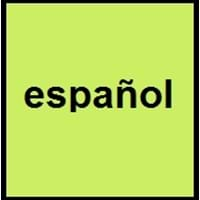Countries
Philippines
Andora, Argentina, Aruba, Australia, Belize, Bolivia, Brazil, Canada, Chile, Colombia, Costa Rica, Cuba, Dominican Republic, Ecuador, El Salvador, Equatorial Guinea, France, Gibraltar, Guatemala, Honduras, Jamaica, Latvia, Luxembourg, Mexico, Morocco, Namibia, Netherlands Antilles, New Zealand, Nicaragua, Norway, Panama, Paraguay, Peru, Philippines, Puerto Rico, Russia, Spain, Sweden, Switzerland, Trinidad and Tobago, Turkey, United Kingdom, United States of America, Uruguay, Venezuela, Western Sahara
National Language
Philippines
Spain
Second Language
Philippines
Andora, Aruba, Australia, Austria, Belgium, Belize, Brazil, Bulgaria, Canada, Denmark, France, Germany, Ireland, Israel, Italy, Jamaica, Luxembourg, Morocco, Netherlands, Netherlands Antilles, New Zealand, Philippines, Poland, Portugal, Romania, Russia, Slovenia, Switzerland, Trinidad and Tobago, Turkey, United Kingdom, United States of America, US Virgin Islands
Speaking Continents
Asia
Africa, Asia, Europe, North America, South America
Minority Language
Not spoken in any of the countries
Brazil, France, Germany, Italy, Japan, Morocco, United Kingdom
Regulated By
Komisyon sa Wikang Filipino
Asociación de Academias de la Lengua Española
Interesting Facts
- "Filipino" was officially declared as national language by the constitution in 1987.
- "Filipino" is the official name of Tagalog, or synonym of it.
- One of the world's most phonetic language is Spanish.
- Up to the 18th century, Spanish was diplomatic language.
Similar To
Tagalog Language
French Language
Derived From
Spanish Language
Latin
Alphabets in
Filipino-Alphabets.jpg#200
Spanish-Alphabets.jpg#200
Writing Direction
Not Available
Left-To-Right, Horizontal
Thank You
Salamat
Gracias
How Are You?
Kumusta
Cómo estás?
Good Night
magandang gabi
Buenas Noches
Good Evening
Magandang gabi
Bonne soirée
Good Afternoon
Magandang hapon
Buenas Tardes
Good Morning
Magandang umaga
Buenos Días
Please
Mangyaring
Por Favor
Sorry
pinagsisisihan
triste
I Love You
Mahal kita
Te Quiero
Excuse Me
patawarin ninyo ako
Discúlpeme
Dialect 1
Bikol
Mexican Spanish
Where They Speak
Philippines
Mexico
How Many People Speak
Not Available
Dialect 2
Hiligaynon
Cuban Spanish
Where They Speak
Philippines
Cuba
Dialect 3
Waray
Puerto Rican Spanish
Where They Speak
Philippines
Puerto Rico
Speaking Population
Not Available
Native Name
filipino
Español
Alternative Names
Pilipino
Castellano, Castilian, Español
French Name
filipino; pilipino
espagnol; castillan
German Name
Pilipino
Spanisch
Pronunciation
[ˌfɪl.ɪˈpiː.no]
[espaˈɲol], [kasteˈʎano]
Ethnicity
Not Available
Not Available
Origin
16th Century
210 BC
Language Family
Austronesian Family
Indo-European Family
Subgroup
Not Available
Romance
Branch
Not Available
Not Available
Early Forms
No early forms
Old Spanish and Spanish
Standard Forms
Filipino
Pluricentric Standard Spanish
Language Position
Not Available
Signed Forms
Not Available
Signed Spanish
Scope
Individual
Individual
ISO 639 1
No Data Available
es
ISO 639 6
Not Available
Not Available
Glottocode
fili1244
stan1288
Linguasphere
No Data Available
51-AAA-b
Language Type
Living
Living
Language Linguistic Typology
Not Available
Subject-Object-Verb
Language Morphological Typology
Not Available
Fusional, Synthetic
Filipino and Spanish Greetings
People around the world use different languages to interact with each other. Even if we cannot communicate fluently in any language, it will always be beneficial to know about some of the common greetings or phrases from that language. This is where Filipino and Spanish greetings helps you to understand basic phrases in Filipino and Spanish language. Filipino word for "Hello" is Kumusta or Spanish word for "Thank You" is Gracias. Find more of such common Filipino Greetings and Spanish Greetings. These greetings will help you to be more confident when conversing with natives that speak these languages.
Filipino vs Spanish Difficulty
The Filipino vs Spanish difficulty level basically depends on the number of Filipino Alphabets and Spanish Alphabets. Also the number of vowels and consonants in the language plays an important role in deciding the difficulty level of that language. The important points to be considered when we compare Filipino and Spanish are the origin, speaking countries, language family, different greetings, speaking population of these languages. Want to know in Filipino and Spanish, which language is harder to learn? Time required to learn Filipino is 44 weeks while to learn Spanish time required is 24 weeks.





